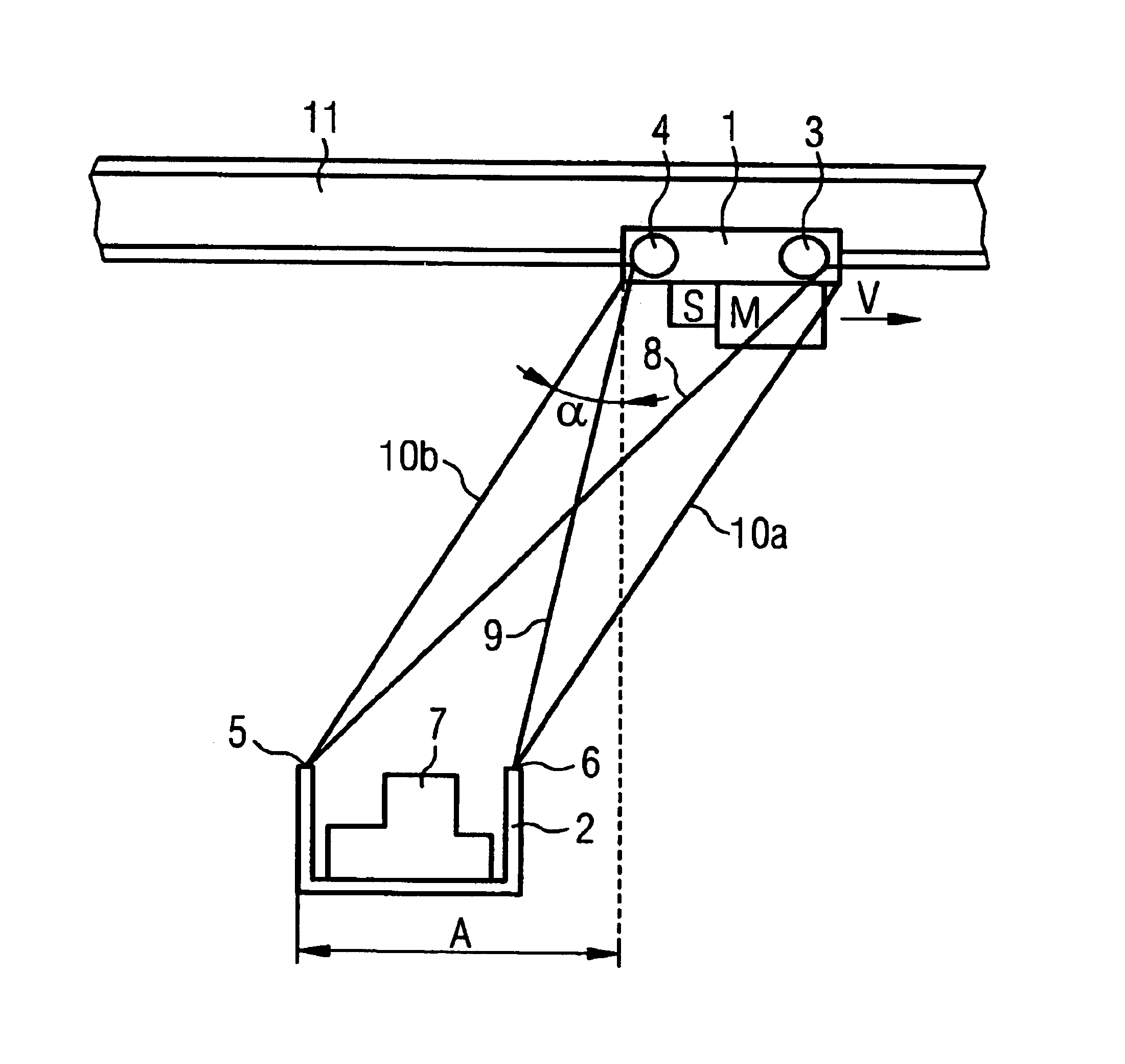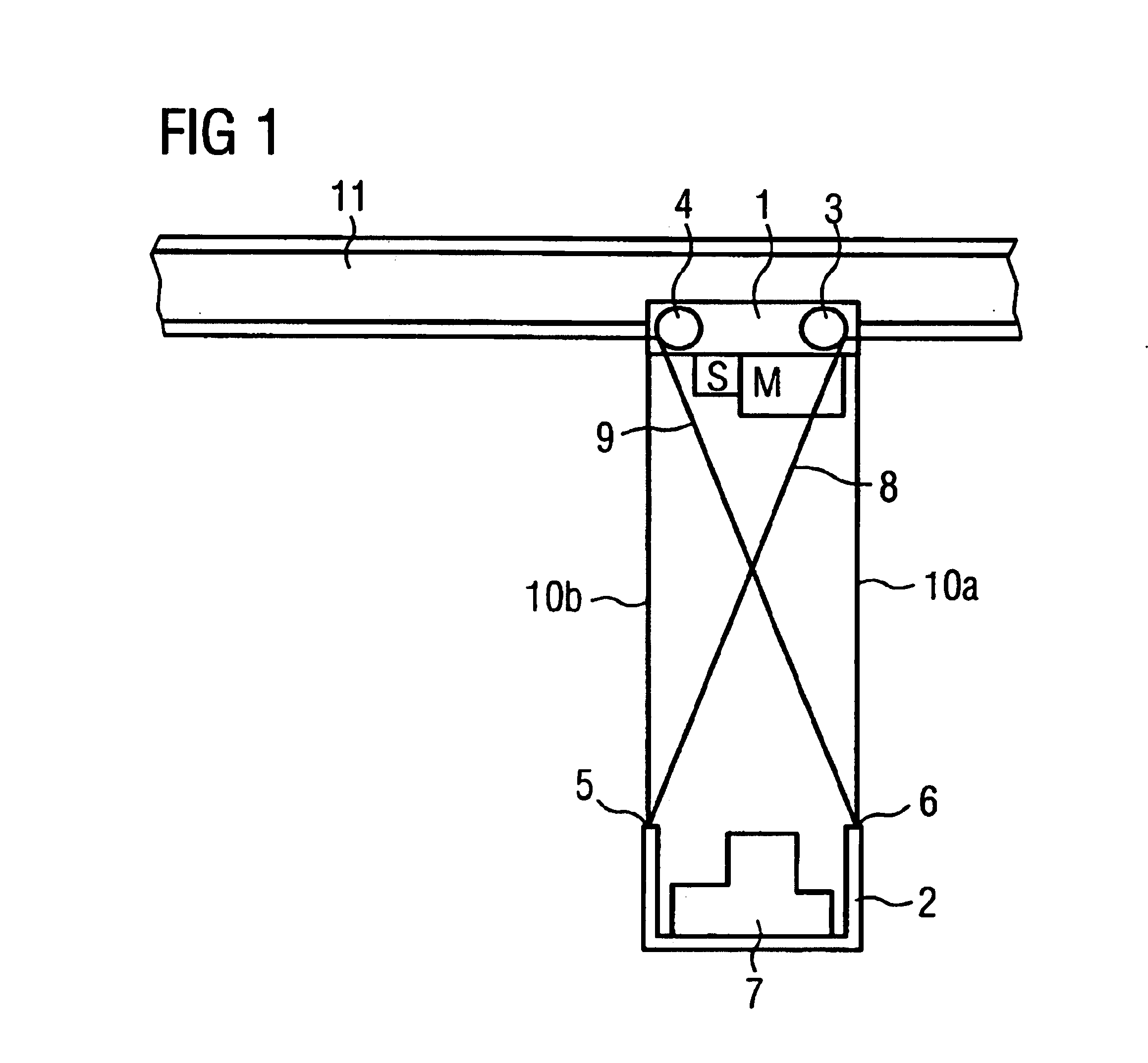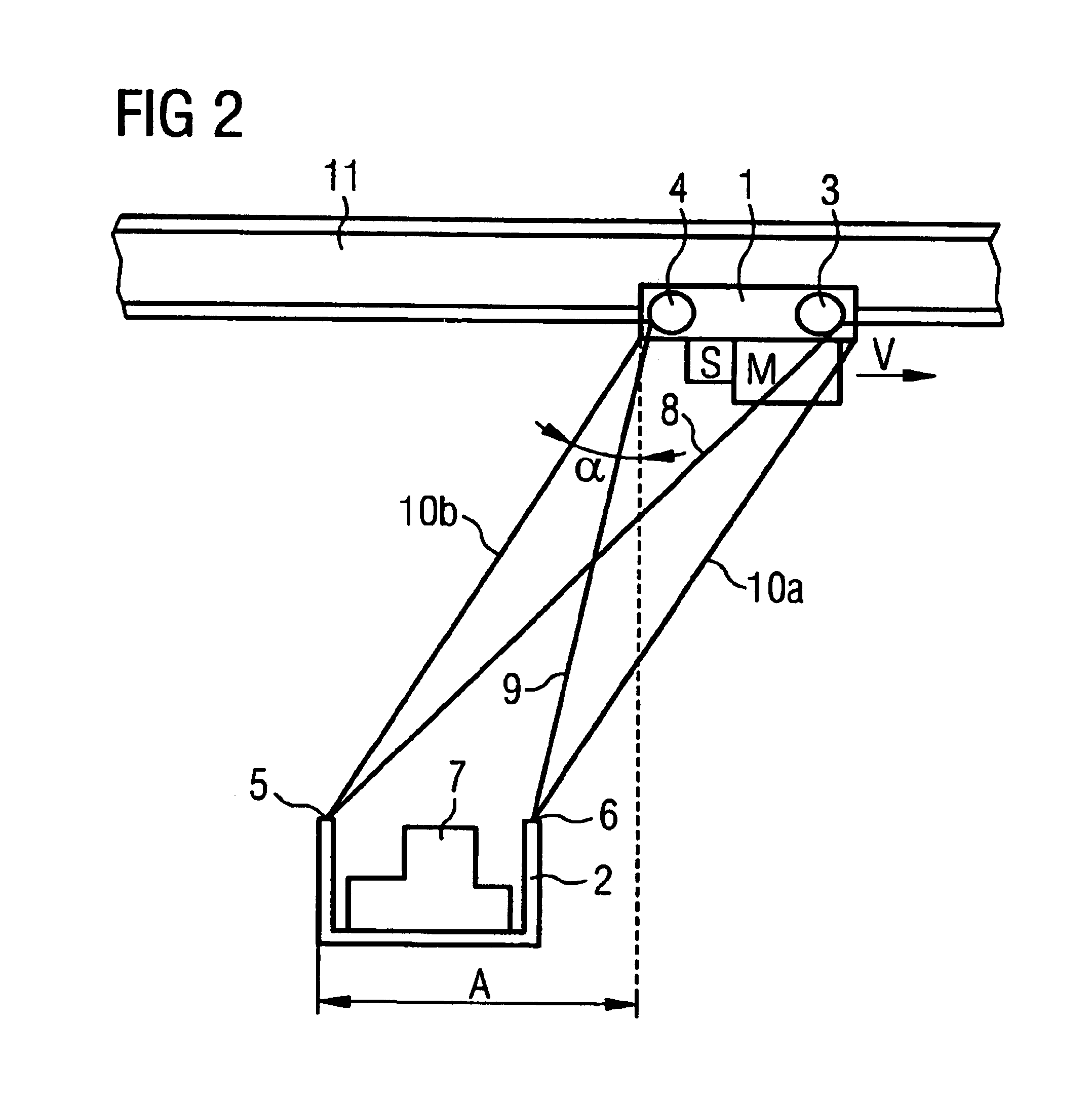System and method for measuring a horizontal deviation of a load receiving element
- Summary
- Abstract
- Description
- Claims
- Application Information
AI Technical Summary
Benefits of technology
Problems solved by technology
Method used
Image
Examples
Embodiment Construction
[0030]FIG. 1 shows a system according to the invention consisting of a hoist travelling trolley 1 which is driven by a motor M for the purpose of transportation on rail 11. The power supply to the motor M is not shown. Motor M is controlled via a control unit S which is operatively connected to the motor M, but need not necessarily be arranged on the hoist travelling trolley. A data processing means, preferably a processor with a computer unit in which corresponding mathematical algorithms are stored, is integrated in or at least connected to the control unit. In the preferred embodiment shown in FIG. 1, there are arranged on the hoist travelling trolley 1 two cabl length sensors 3,4 whos cables 8, 9 are stretched diagonally downwards towards the load receiving element and are secured there at an anchorage point 5,6. The length of cables 8 and 9 is essentially the same in the rest position in FIG. 1 since, due to gravity, the load receiving element 2 is suspended perpendicularly by ...
PUM
 Login to View More
Login to View More Abstract
Description
Claims
Application Information
 Login to View More
Login to View More - R&D
- Intellectual Property
- Life Sciences
- Materials
- Tech Scout
- Unparalleled Data Quality
- Higher Quality Content
- 60% Fewer Hallucinations
Browse by: Latest US Patents, China's latest patents, Technical Efficacy Thesaurus, Application Domain, Technology Topic, Popular Technical Reports.
© 2025 PatSnap. All rights reserved.Legal|Privacy policy|Modern Slavery Act Transparency Statement|Sitemap|About US| Contact US: help@patsnap.com



